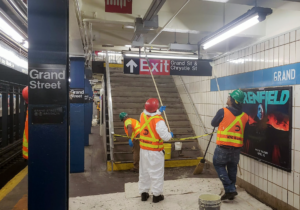Kansas DOT works on state rail plan
Written by adminA map from 1900 that highlighted Kansas railways would have just been one giant black blob from all the crisscrossing railways, The Morning Sun in Pittsburg, Kan., reports. That's no longer true. Five counties in the state no longer have any railway of any sort (Rooks, Graham, Greenwood, Chautauqua and Comanche).
Kansas DOT officials are
looking to bring the railroads back stronger than ever.
KDOT is working on a
new Kansas State Rail Plan, a five- to six-year plan to improve and update the
rail system in the state. That includes all 4,700 miles of railroad tracks in
the state.
On Oct. 1, KDOT hosted a
meeting in Pittsburg to help explore needs in the state railway system. The
meeting was the third of six across the state. Wichita and Overland Park
meetings were held earlier this week, with meetings in Topeka, Hays and Dodge
City yet to come.
"We’re looking at trends
in the industry. We’re seeking public input," said John Maddox, KDOT rail and
freight unit manager. "What’s going on, we see as good. There are issues that
we are becoming aware of at these meetings that we should address. It helps our
overall plan and guidance. We have to take that and implement it into policy."
The plan is set to be
released sometime next summer, but there’s plenty of issues left to be
resolved.
Possibly the biggest among those issues is funding.
The Kansas
Department of Transportation spent $13 billion on all forms of statewide
transportation over the last 10 years. Of that amount, only about $30 million
was spent on railroads. That equates to about 0.23 percent of the KDOT budget.
That’s likely not going to be enough, as the state has the sixth most miles of
railroads in the country, with 4,700 miles of railroad. In fact, one study
shows that 66 percent of Kansas freight moves by rail.
And sometimes the product
being transported is just as important as the mode of transportation.
In
Kansas, 21.9 million tons of freight heads out of the state, 46 percent of
which is grain and crops. Coming into the state is 30.3 million tons of
freight. Of that, 60 percent is coal.
At the roundtable
discussion, several ideas and thoughts were discussed, including a hypothetical
extension of passenger rail throughout the state and investing in viable tracks
rather than other forms of transportation, such as air travel.
All told, KDOT officials
had plenty to work with as they try to make the new state plan for years to
come.
"We’re taking inventory
of the rail system and looking for issues and needs in the state," Maddox said.
"We are working for economic development, safety issues, and other
recommendations. These are potential planning issues that will move us forward
throughout the state."





